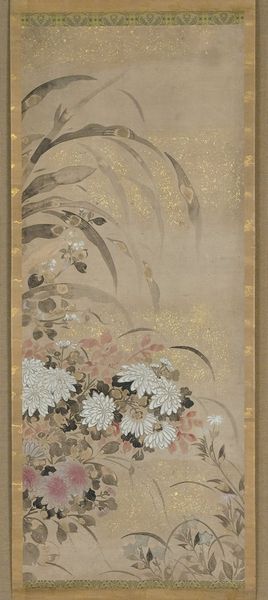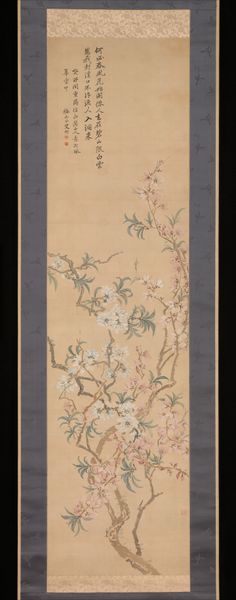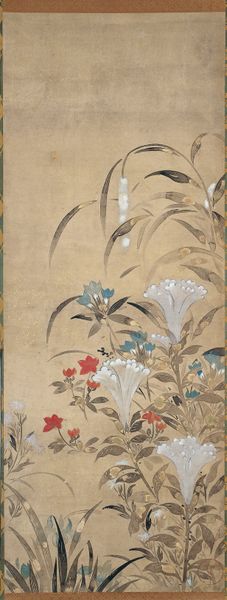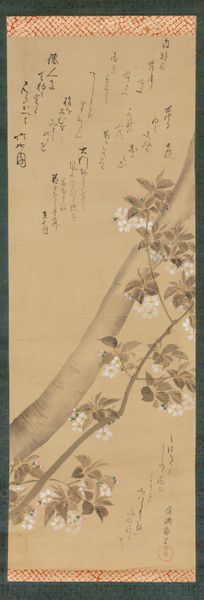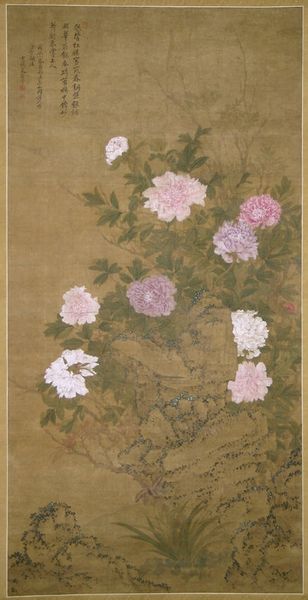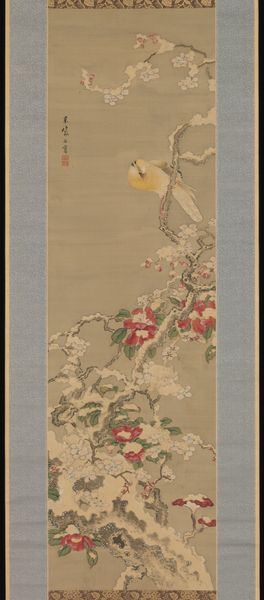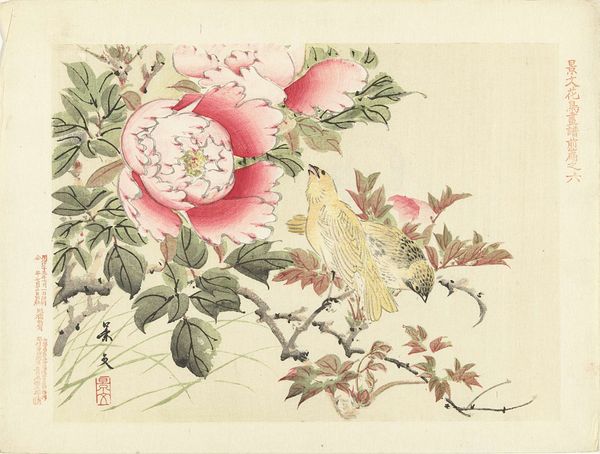
painting, watercolor, ink
#
organic
#
water colours
#
painting
#
asian-art
#
landscape
#
ukiyo-e
#
japan
#
watercolor
#
ink
#
line
#
watercolor
Dimensions: 36 7/8 x 10 1/2 in. (93.66 x 26.67 cm) (image)65 x 12 in. (165.1 x 30.48 cm) (sheet)
Copyright: Public Domain
Curator: It has a beautiful stillness, doesn’t it? I am drawn to how serene the artwork is overall, like capturing a silent spring morning. Editor: Right. What strikes me immediately is how simple it all appears – and likely isn't. What do we know about this piece? Curator: This is “Yamabuki,” by Sakai Hoitsu, from the 19th century, held here at the Minneapolis Institute of Art. Hoitsu was a prominent painter of the Rinpa school, which greatly emphasized naturalism and decorative design. This work employs ink and watercolor on paper. Editor: The materials make a difference, I think. Watercolor lends itself to delicacy, and you can almost feel the absorbency of the paper, like you could reach out and touch the very fibers. What I see is a crafted, intentional choice of organic materials. The gold color comes through with surprising effect too, not unlike some screens of the time. Curator: I’m particularly interested in how it fits within the broader artistic movements of the time, aligning with the Ukiyo-e tradition while simultaneously establishing a distinct visual identity that evokes traditional Japanese aesthetic values. This presentation signifies a strong public preference during Japan's Edo period for artworks demonstrating the elegance of nature. Editor: Right. And those bright floral colors amidst the subdued backdrop? You have got your raw pigment right next to natural paper. It's not just representational. Curator: Exactly. It’s also how Hoitsu subtly references classical themes through these strategically placed blooms. His intent involves cultural interpretation. Editor: Ultimately, though, looking closely reminds me how an artist chooses a simple-seeming form to express something profound. The work is almost like a conversation between material, labor, and cultural meaning. Curator: Precisely; and within a specific sociopolitical environment, showcasing Japan's aesthetic values during the 19th century. Editor: So there you go. An intentional, handcrafted window into history. Curator: Indeed – with carefully considered and maintained historical significance.
Comments
No comments
Be the first to comment and join the conversation on the ultimate creative platform.
